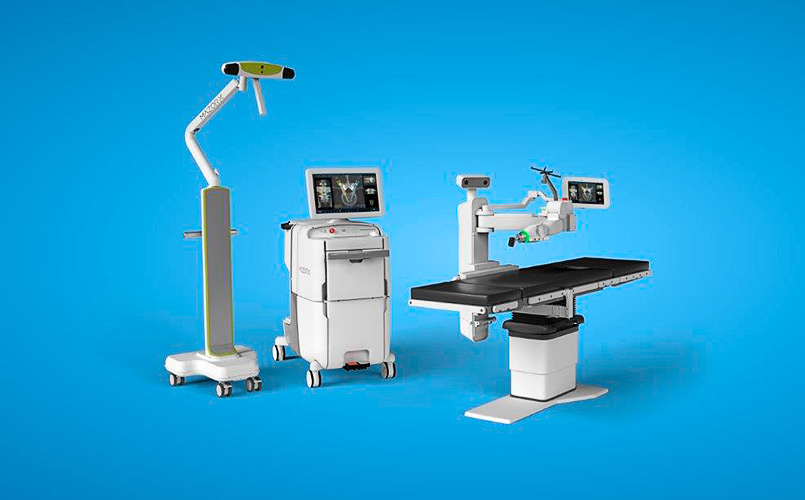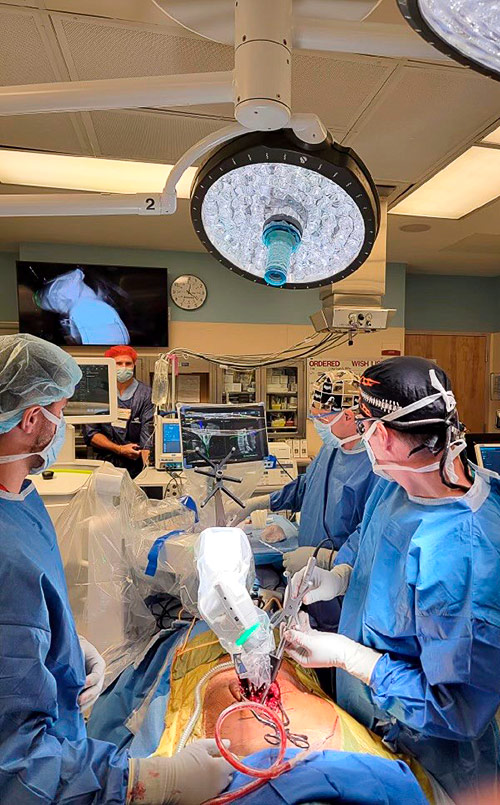Rainbow Surgeons Are Making Spine Surgery Safer for Pediatric Patients
University Hospitals Rainbow Babies & Children’s orthopedic surgeons combine years of experience and expertise with the latest technologies to make pediatric spine surgery faster, safer and smarter.
Using new technology platforms like the Pulse tower, which integrates reduced radiation and imaging enhancement, rod bending, navigation, intraoperative neuromonitoring and spinal alignment tools, pediatric surgeons are able to increase safety, efficiency and the ability to reproduce positive outcomes for patients. As a result, children recover quicker and return to the normal activities of childhood.
Mazor X Robotic Guided Surgery

The team recently added robotic guidance to its toolkit through the acquisition of Mazor X Stealth Edition – a technology that allows surgeons to maximize accuracy and efficiency across the spectrum of pediatric spinal surgery, from minimally invasive approaches to complex deformity correction.
Prior to surgery, the Mazor X Stealth™ Edition platform gives the surgeon planning functionality to develop an optimal surgery in a 3-D simulation using the patient’s own computed tomography (CT) imaging. In addition, computer analytics provide the surgeon with data for the pre-surgical planning and guidance during the procedure. Mazor X has a robotic arm that provides precise placement of surgical tools and pedicle screws, while giving 3-D visualization of the surgical area of the spine. Using these technologies, the surgeon is able to operate with precision, efficiency and confidence – making positive outcomes reproducible.
Watch the video: Making Spine Surgery Safer for KidsOther Spine Surgery Technology

Pediatric orthopedic surgeons are using advanced technology platforms and software like Pulse and Mazor X but also offer other options for the varying needs of children, such as:
- Growing rod technologies, including the Shilla™ and Magec™ growing rod systems, to treat younger children with severe spinal deformities. Growing rods allows the spine and lungs to grow with the child.
- Another system used to treat younger patients with idiopathic scoliosis is the Tether™ Vertebral Body Tethering system. This non-fusion device uses a strong, flexible cord – attached to the bone with anchors and screws – to gradually straighten the spine as the child grows.
- Our team also uses Firefly® technology, which features specialized software to create a 3-D printed model of the child’s spine to guide surgeons in the precise placement of screws and reduce overall surgery time.
- UH Rainbow is one of about 20 U.S. sites to offer ApiFix, a less-invasive alternative to spinal fusion that preserves motion and function in children with adolescent idiopathic scoliosis. With ApiFix, surgeons use screws and anchors to attach a rod to the spine that allows movement as the curve is corrected and the child grows. Patients who undergo the ApiFix procedure return home in one to two days and resume normal activities in four – six weeks, compared to four – six months with tradition spinal fusion.
- The Vertical Expandable Prosthetic Titanium Rib (VEPTR) is used to treat children with thoracic insufficiency syndrome, which causes severe deformities of the chest, spine and ribs. The device is a metal rod that surgeons attach to the child’s ribs, spine or pelvis. It helps straighten the spine and separate the ribs and can expand or contract as the patient grows.
Your child’s health is important. Get expert care.
Offering in-person and virtual visits.
216-844-7200


